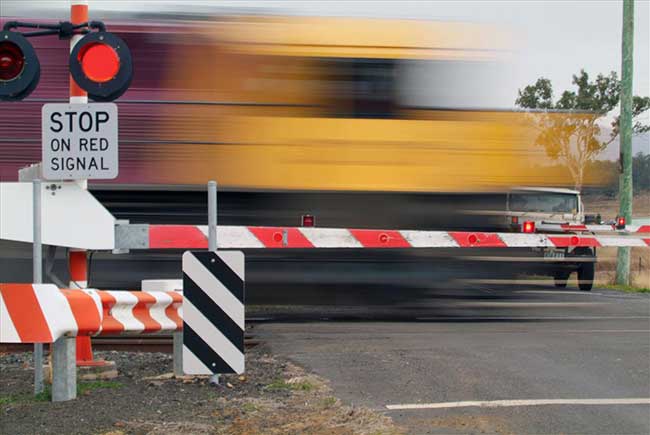
Australia’s epic journey to finally create a harmonised national rail system has moved a stage closer to overcoming century-old technical inconsistencies created by political divisions and interstate rivalries.
The Australian Rail Track Corporation (ARTC) has confirmed it is actively investigating the prospect of incorporating the Sunshine State’s extensive freight rail network into the national rail system, a move that would make it simpler for train operators to move across states.
The inconsistencies between the width of rail tracks across Australia’s states are so infamous they are now almost permanently embedded as a pejorative in the vernacular of project management where the term “rail gauges” is routinely used as the prime metaphor for systemic inconsistency.
The renewed enthusiasm for national rail integration follows an agreement between federal Minister for Infrastructure and Regional Development Warren Truss and the Queensland Minister for Main Roads Scott Emerson to evaluate the benefit, or otherwise, of expanding the ARTC’s 8,500 kilometre national network.
If the ARTC and the Queensland government can establish the merits of such a move, the result could mean bringing Queensland Rail’s 6,600 kilometres of freight rail track outside south-east Queensland into the ARTC’s domain.
However Mr Truss said there were a number of factors that still need to be considered that.
“By no means is this a done deal, but it’s important that we have all the facts on the table,” Mr Truss said.
Mr Emerson said ARTC officers would begin working with Queensland Rail staff in late February 2014 and report back to the Queensland and Federal governments by mid-year.
“Queensland’s Moving Freight strategy shows the freight task is expected to grow by 80 per cent over the next decade and we need a rail network that can do that heavy lifting,” he said.
Importantly, the plan has been backed by the Australasian Railway Association (ARA), whose chief executive officer Bryan Nye said it’s “got to be good for Australia” because it will “enhance the control of the national train network”.
“The challenge is [Queensland’s] narrow gauge; the rest of the network is standard gauge. But over a period of time when you’re building new bridges, you probably could build new gauges to make it worthwhile,” Mr Nye said.
One of the main drivers behind the ARA’s support for bringing Queensland into the national freight rail network is the potential for a uniform upgrading of signal control systems to digital automatic signalling.
The ARTC has been working on a new digital automatic signalling system with American aerospace, defence, security and advanced technology company Lockheed Martin and Italian transportation company Ansaldo STS to create the new system.
The ARTC has dubbed this new signalling system as the as the Advanced Train Management System (ATMS) and has been valued at $100 million over its proof of concept period.
The implementation of this system will eventually mean that traditional trackside signalling will be replaced with on-board displays of ‘authorities’ to drivers, will provide precise location of trains both front and rear, and provide voice and data information to all locomotives via the Telstra 3G National Network.
“Eventually, Queensland would have had to replace its signals, but if it’s done with one unified system across Australia, there are advantages to that,” Mr Nye said.
He said the ARTC is moving in this direction as well as all the passenger networks such as Sydney Trains by replacing their “old signalling systems with modern, digital train control systems”.





On first appearances this sounds encouraging but at second glance, the reality is that a national system of various gauges is being considered and not a national network of uniform gauge infrastructure. As the original strategic proponent of the Great Australian Trunk Rail System between Melbourne and Brisbane and thence onto Australia’s north coastline, I don’t have much truck for feeble statements about a few bridges possibly being built to standard gauge proportions; sounds like half a century type idea that will soon die due to inertia. It’s more of the same; it’s the old rail WAYS seeping through.
We have to do much better than this. The Americans, Canadians, British and New Zealanders sorted out the various gauge problems well over a century ago. The Americans, after trying numerous methods of getting around their breaks of gauge, had decided by the 1850s that here was no alternative but full standardisation of their rail network. So the private railroads built their trunklines and all the connecting branch and regional lines converted to the national gauge OR became isolated. Isolation, how familiar it that here in Australia!
As my web pages point out, the GATR System is the new rail WAY: it is designed not just to service the Melbourne – Brisbane freight task but to be the backbone of a great network of transport infrastructure that will at last stitch our nation into a fully interactive, national economy.
So the government needs to adopt the broad parameters of network development and then step aside -away with the GBE’s- and let private enterprise bring in the innovators and investors with new rail WAY plans and ideas. Revamped Infrastructure Australia and the Productivity Commissions should oversee the national good and make contributory actions as seen necessary, safety or productivity wise.
This is not difficult or fanciful stuff. We have small engineering obstacles compared with competitors like the US and Canada but, as we are languishing last in the OECD’s transport productivity effort, we are paying a huge price in lost opportunities. It is actually a disgrace.